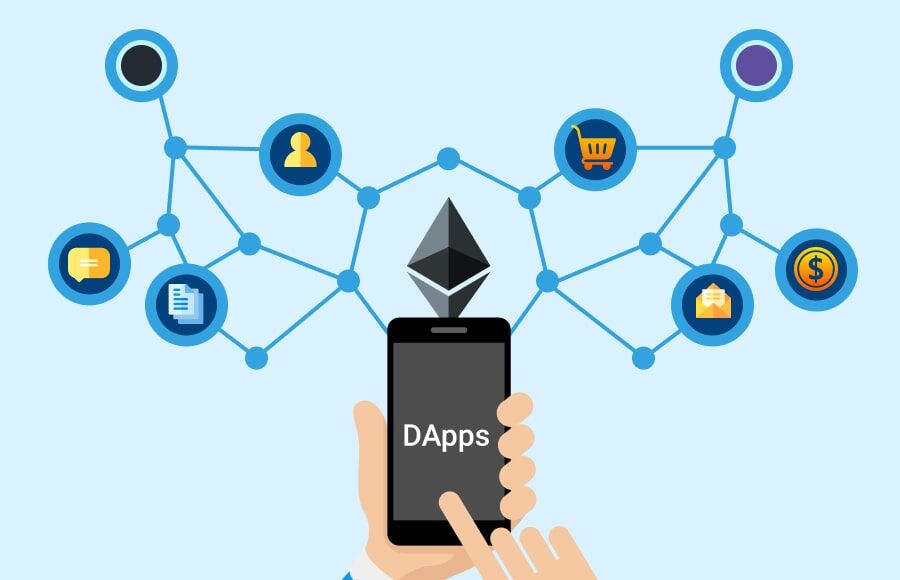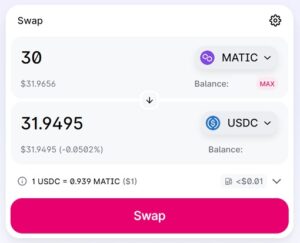Discover DApps: A foremost Beginner’s Guide to Decentralized Applications
Are you a newcomer to the world of cryptocurrencies and feeling overwhelmed by the technical jargon and complex concepts surrounding decentralized applications? Fear not, because in this blog post, we will break down the basics of DApps and help you understand how they are revolutionizing the way we interact with blockchain technology.
What are DApps?

DApps, short for decentralized applications, are applications that run on a decentralized network of computers, rather than a single server. This means that they are not controlled by a single entity and are resistant to censorship and manipulation. DApps typically use blockchain technology to enable secure and transparent transactions without the need for intermediaries. The decentralized nature of DApps makes them a cornerstone of the blockchain ecosystem, offering new possibilities for innovation in various sectors.
Why Should You Care About DApps?
They offer several advantages over traditional applications, including:
Transparency: All transactions on a DApp are recorded on the blockchain, providing an immutable record of activity. This transparency ensures that users can verify and validate the integrity of transactions, minimizing the risk of fraud or corruption.
Security: Because DApps are decentralized, they are less vulnerable to cyber attacks and hacking. Instead of relying on a single point of failure, they distribute data and processing across multiple nodes, making it more difficult for malicious actors to compromise the system.
Autonomy: Users have more control over their data and assets when using a DApp, as they do not need to rely on a central authority. This empowers individuals and promotes financial sovereignty, enabling users to manage their own funds and make transactions without the need for intermediaries.
How to Get Started with DApps?

1. Choose a Wallet: To interact with DApps, you will need a cryptocurrency wallet. A wallet allows you to securely store and manage your digital assets. Popular options include MetaMask, Trust Wallet, and Coinbase Wallet. Each wallet has its own unique features and supported blockchains, so choose one that aligns with your needs.
2. Explore DApp Platforms: There are several platforms that host a wide range of DApps, such as Ethereum, Binance Smart Chain, and Polygon. These platforms provide a marketplace for developers to deploy their DApps and for users to discover and interact with them. Explore these platforms to discover different DApps for various purposes, including decentralized finance (DeFi), gaming, and social networking.
3. Understand Gas Fees: When using DApps on blockchain networks like Ethereum, you may encounter gas fees, which are transaction fees paid to miners. Gas fees vary depending on network congestion and the complexity of the transaction. Be mindful of these fees when interacting with DApps and consider them in your overall cost calculations.
4. Start Small: As a beginner, it’s best to start with simple DApps that do not require advanced technical knowledge. Look those that offer user-friendly interfaces and clear instructions. For example, you could try using a decentralized exchange (DEX) like Uniswap to trade cryptocurrencies or participate in liquidity pools. Alternatively, you could explore decentralized lending platforms like Compound or Aave to earn interest on your crypto assets.
5. Stay Informed: The world of cryptocurrencies is constantly evolving. Stay updated with the latest news and developments in the space to make informed decisions. Follow reputable sources, join online communities, and engage with fellow enthusiasts to expand your knowledge and stay connected with the DApp ecosystem.
Examples of DApps for Beginners
Here are a few popular examples:
Uniswap: A decentralized exchange (DEX) for trading cryptocurrencies. Uniswap allows users to swap ERC-20 tokens directly from their wallets, without the need for traditional order books or intermediaries. Uniswap simplifies the process of trading digital assets, making it accessible even to beginners.

CryptoKitties: A collectibles game where users can breed and trade virtual cats. Each CryptoKitty is represented as a non-fungible token (NFT) on the Ethereum blockchain, making them unique and verifiable. Cryptokitties demonstrates the creative potential of blockchain technology beyond just financial applications.
Compound: A decentralized lending platform that allows users to earn interest on their crypto assets. Users can deposit their tokens into lending pools and earn interest based on the supply and demand dynamics of the platform. Compound is a prime example of how decentralized finance (DeFi) is reshaping traditional financial services.
While these examples are just the tip of the iceberg, they highlight some of the possibilities and use cases enabled by DApps. As you gain experience and confidence, you can explore more complex one’s and dive deeper into the world of decentralized finance, decentralized identity, and decentralized governance.
Also Read:What is DeFi? DeFi (101) explained clearly at its best
Conclusion
DApps are reshaping the digital landscape by offering a new way to interact with blockchain technology. As a beginner in the world of cryptocurrencies, exploring DApps can be an exciting and educational experience. Remember to do your research, prioritize security, and don’t be afraid to experiment with different DApps to discover their full potential.
Happy DApp-ing! 🚀🌐
Disclaimer: The content provided in this blog post is for informational purposes only and should not be considered financial or investment advice. Always do your own research before engaging with any DApp or cryptocurrency-related activity.






2 Comments